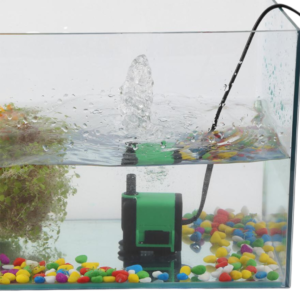Beginner’s Guide to Aquascaping: Creating Stunning Underwater Landscapes
Welcome to the fascinating world of aquascaping! Whether you’re a seasoned aquarium enthusiast or a beginner looking to embark on a new hobby, aquascaping offers a unique opportunity to blend artistry and nature within the confines of a glass tank. In this beginner’s guide, we’ll explore the basics of aquascaping, from selecting the right materials to mastering essential techniques. Join us on this creative journey as we dive into the captivating realm of underwater landscapes.
- Understanding Aquascaping: Aquascaping is the art of designing and arranging aquatic plants, rocks, driftwood, and other elements to create a visually appealing underwater environment. It involves careful consideration of various factors such as plant selection, hardscape placement, and water parameters to achieve a balanced and harmonious composition.
artificial aquatic plants buy it here
- Choosing the Right Aquarium: Before diving into aquascaping, it’s crucial to select the right aquarium that suits your needs. Consider factors like size, shape, and material. Opt for a tank that provides ample space for your desired layout and ensures proper lighting and filtration.
- Essential Aquascaping Equipment: To get started, you’ll need a few basic tools and equipment. These include an aquarium heater, a high-quality filter, lighting fixtures, a substrate, and fertilizers. Additionally, invest in a reliable water testing kit to monitor the water parameters regularly.
aquarium filter buy it here
- Selecting Aquatic Plants: Aquatic plants form the foundation of any aquascape. Choose a variety of plants that vary in height, leaf shape, and color to create depth and texture. Some popular beginner-friendly plants include Java Fern, Anubias, and Amazon Sword. Consider their lighting and nutrient requirements when making your selection.
- Hardscape Essentials: Hardscape elements like rocks and driftwood add structure and character to your aquascape. When selecting these materials, opt for those that are aquarium-safe and do not release harmful substances into the water. Experiment with different sizes, shapes, and textures to create visually appealing focal points.
- The Importance of Substrate: The substrate serves as the foundation for your aquatic plants and provides nutrients for their growth. Choose a substrate specifically designed for planted aquariums, such as nutrient-rich soil or inert gravel. Consider the requirements of your chosen plants when deciding on the type and depth of substrate.
- Mastering Aquascaping Techniques: Several techniques can help you achieve different visual effects in your aquascape. The golden ratio, rule of thirds, and focal points are common principles used in aquascaping. Experiment with these techniques to create a layout that is visually balanced and aesthetically pleasing.
- Lighting for Optimal Growth: Proper lighting is essential for the healthy growth of your aquatic plants. Invest in high-quality LED lights that provide a balanced spectrum for photosynthesis. Determine the lighting requirements of your chosen plants and adjust the duration and intensity accordingly.
aquarium LED lights buy it here
- Establishing Water Parameters: Maintaining optimal water parameters is crucial for the well-being of your aquatic plants and fish. Regularly test and monitor parameters such as temperature, pH, ammonia, nitrite, and nitrate levels. Make adjustments as necessary to ensure a stable and healthy aquatic environment.
- Introducing Livestock: Once your aquascape is established and stable, you can introduce compatible fish and invertebrates. Research the requirements and behavior of potential tank inhabitants to ensure a harmonious and balanced ecosystem. Avoid overstocking and choose species that are suitable for the size of your tank.
Conclusion:
Aquascaping is a rewarding and creative journey that allows you to bring a piece of nature into your home. With the right knowledge, equipment, and techniques, you can create stunning underwater landscapes that captivate and inspire. Remember to start small, be patient, and enjoy the process. Happy aquascaping!










